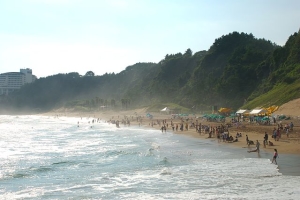We can all use a bit more perspective in our industry. A couple of weeks ago I had the good fortune of spending time with two extraordinary ladies who are really trying to improve the state of appraisal in South Korea—one is an appraiser (Min-Kyung Oh) and the other a real estate professor from South Korea (Dr. Suyeon Jung). We met at the International Association of Assessing Officers (IAAO) Conference in Sacramento, California and immediately hit it off. It turns out they were traveling to Atlanta immediately after Sacramento, and the professor was a visiting scholar at Georgia State University last year. We suddenly realized we knew the same circle of real estate professionals in metro Atlanta. After the IAAO conference we met up again in Atlanta last week and talked about some big-picture topics related to real estate appraisal. Among those topics were appraisal bias, appraiser credibility, and real estate development of Jeju Island in Korea, where Dr. Jung lives and teaches at Jeju National University. I shared with them information about the Appraisal Subcommittee’s National Registry, which has nationwide coverage and reports any active disciplinary actions that limit an appraiser’s ability to appraise. They were intrigued that this information was available for their research purposes.
We also discussed the role that appraisers play in litigation. Our firm does a substantial amount of work with attorneys, so credibility is a big part of what keeps us working. The Uniform Standards of Professional Appraisal Practice (USPAP) have a rigid definition of how we define credibility (“worthy of belief”). This concept is not unique to the United States. My new Korean friends like the way USPAP explains this concept and would like to see more of that back home.
As part of our conversation, the following situation came up. Recently in South Korea a luxury high rise near Seoul was valued by two appraisers, and the difference between them was $2 million. I explained to them that we worked on several matters related to rails-to-trails litigation where we were the third-party appraiser that reviewed and compared the results of two other appraisers—one for the plaintiff and one for the defendant. They were intrigued by this idea.
If you’re interested in other global differences in appraising, check out my posts from Japan, beginning with Part 1 .
Photo of the beach at the Jungmun Tourism Complex in Jeju-do, South Korea courtesy of Wikimedia Commons user Yoo Chung, CC-BY-SA-3.0.






Recent Comments